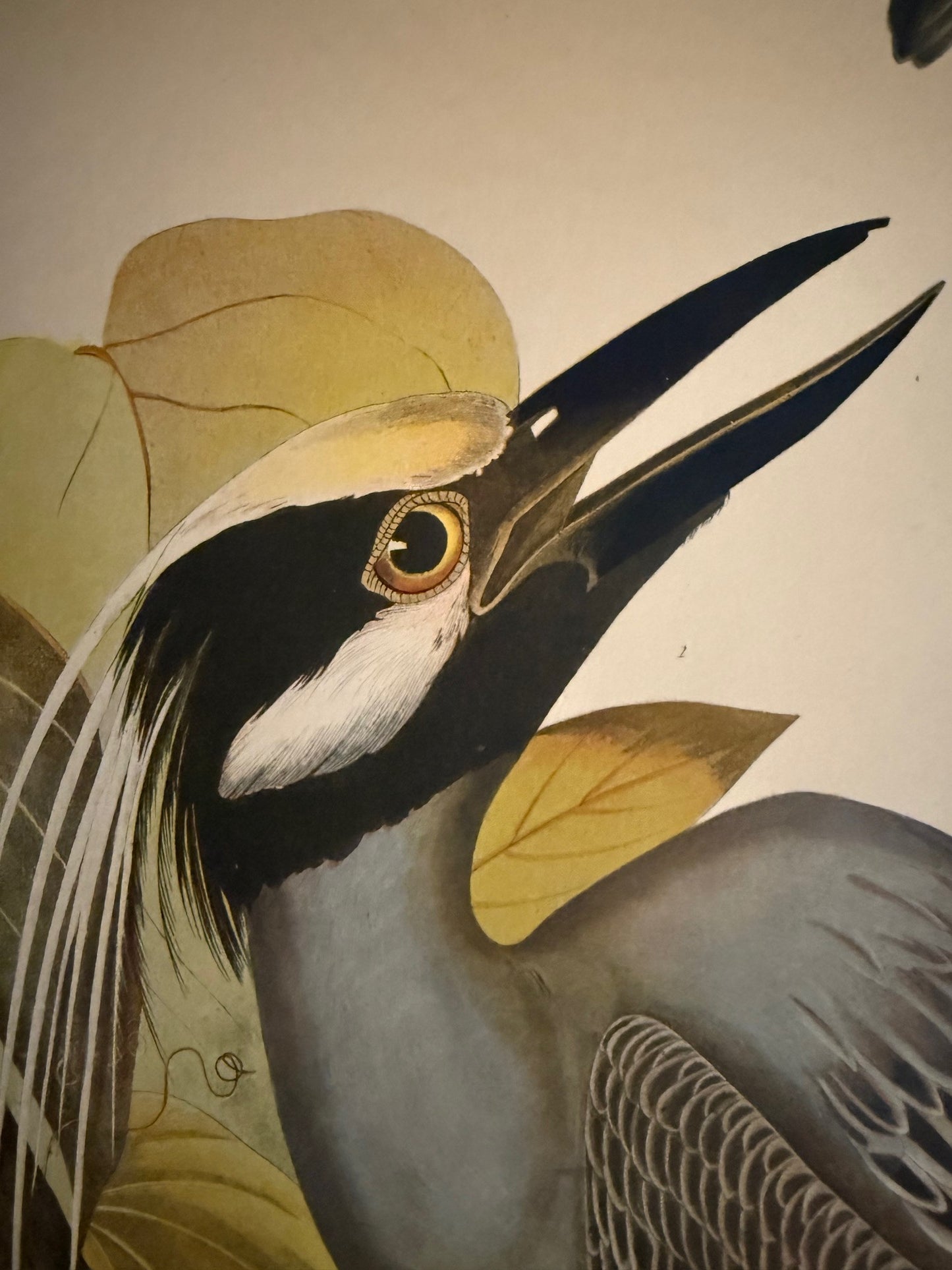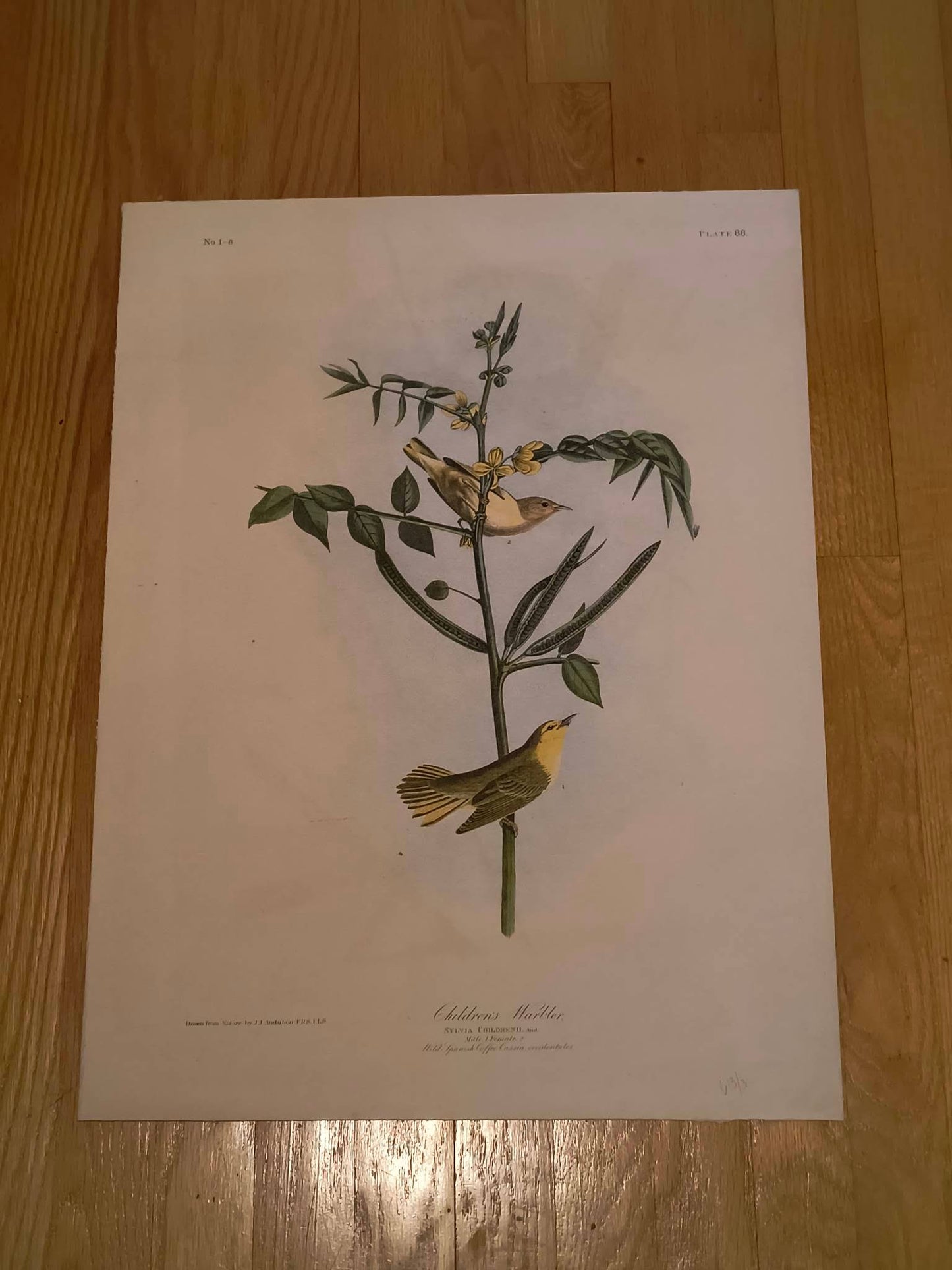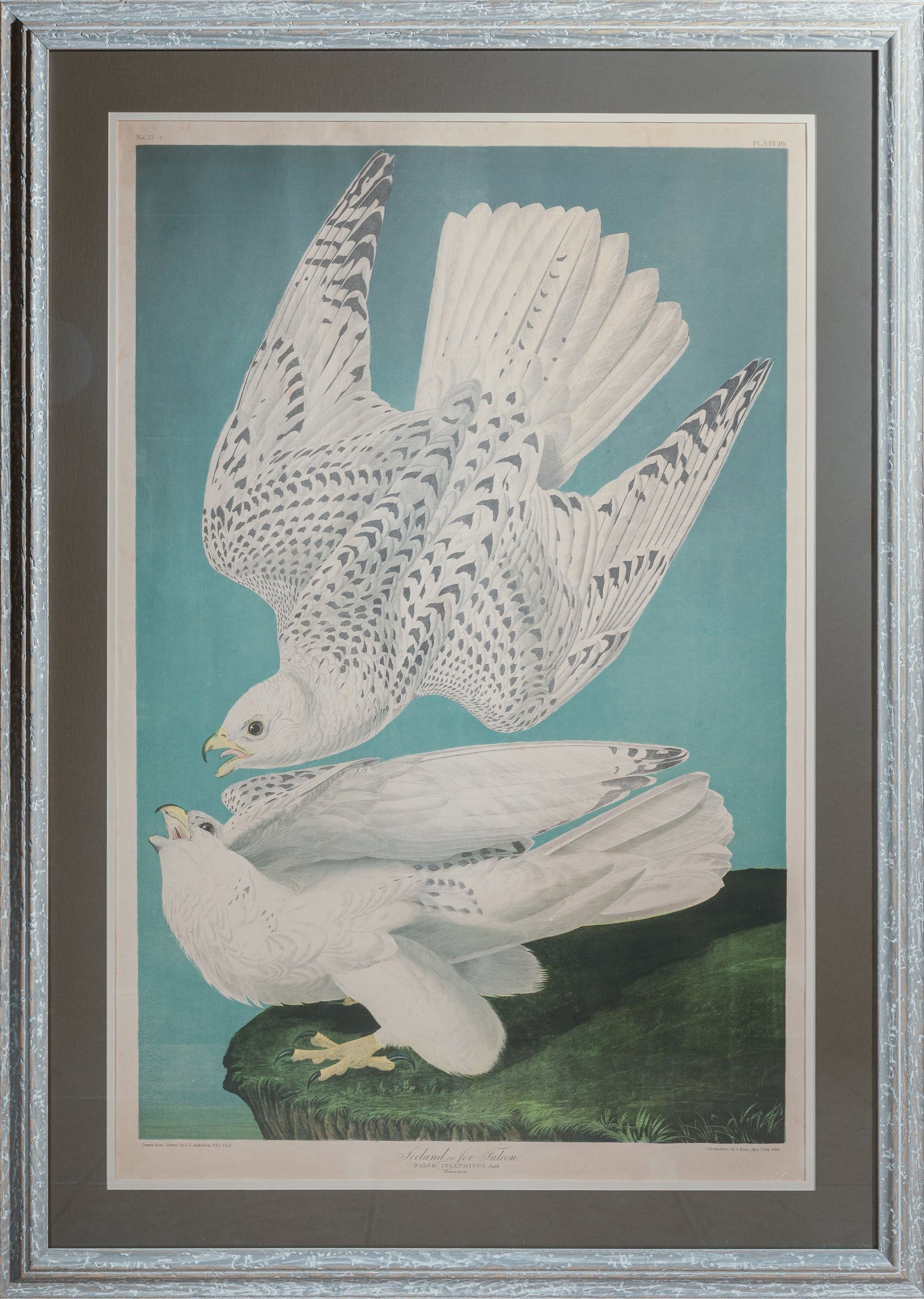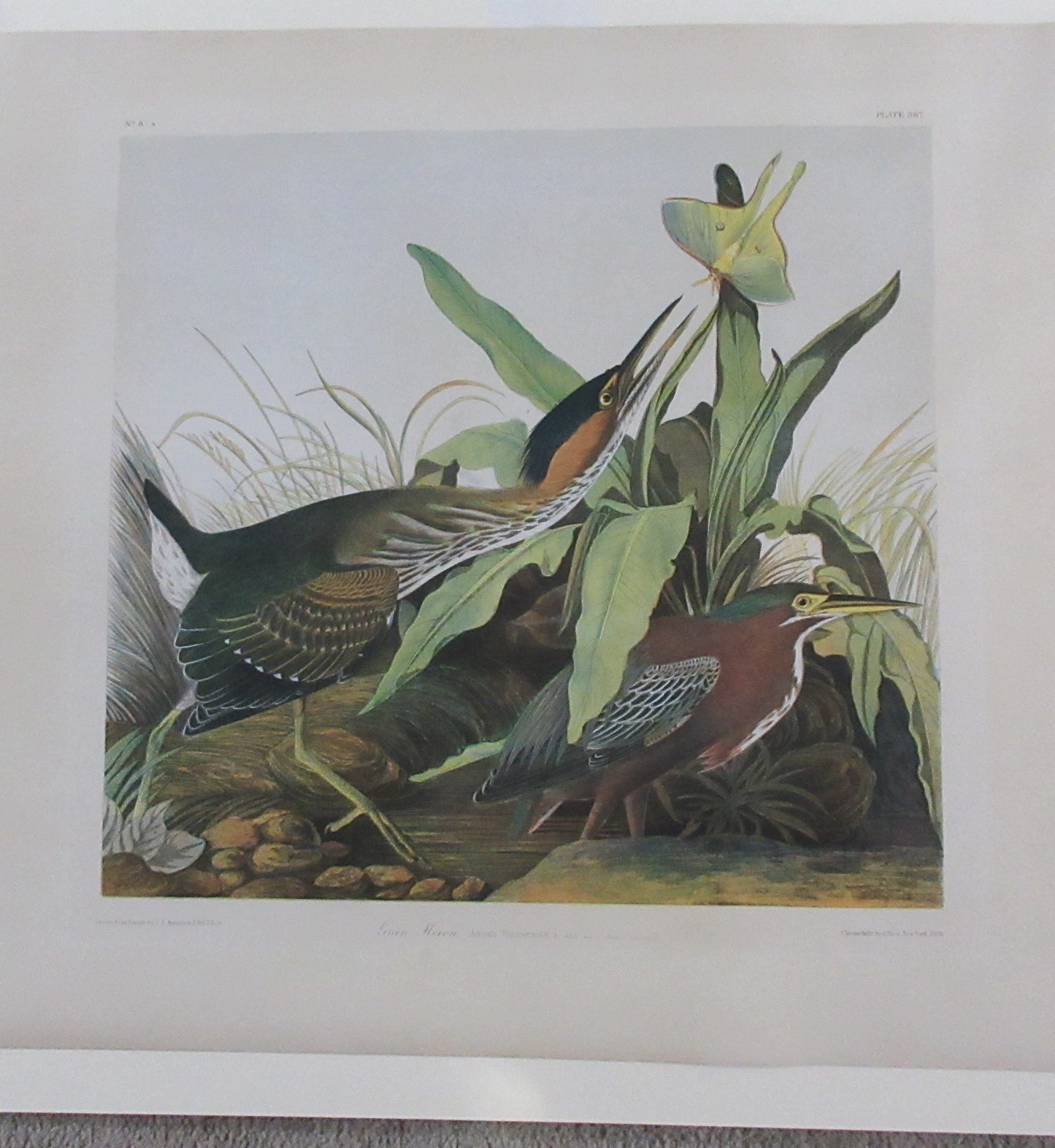Gallery 6 - Original Audubon Biens
The Bien edition prints of the Birds of America were produced by the Audubon family, and thus are properly termed originals. Unlike the Havell edition prints which were produced in England, the Bien Edition prints were produced completely in America. Thus, they are truly American originals. In 1858, about seven years after John James Audubon passed away, his younger son John Woodhouse Audubon initiated an ambitious project to reissue the Birds of America to solve some of the mounting financial problems. He recruited the Roe Lockwood Company in New York city to publish the works and Julius Bien for lithography. Unlike the Havells which were produced from copper engraving plates, Julius Bien utilized the newly emerging chromolithography process as a way of reducing the costs of production. Chromolithography utilized different sets of printing stones to produce a given plate, some with different colors to produce the final colored image. The use of different stones occasionally resulted in very slight misregister of colors on the dark outlines of birds and background, thus serving as a charming reminder of chromolithography process. Larger images were printed on a single page as in the Havell edition, whereas smaller images were printed two per page. All the larger images as well as some smaller images carry the credit "Chromolithy by J. Bien, New York, 1860". Thus these images are commonly referred to as the Bien edition plates. Unfortunately, the start of the Civil War in 1860 brought an abrupt end to this project (and a financial ruin to the Audubon family) after only about 105 pages were printed. It was said that about 100 copies of each page (with bird images) were produced, but most of them did not survive.




